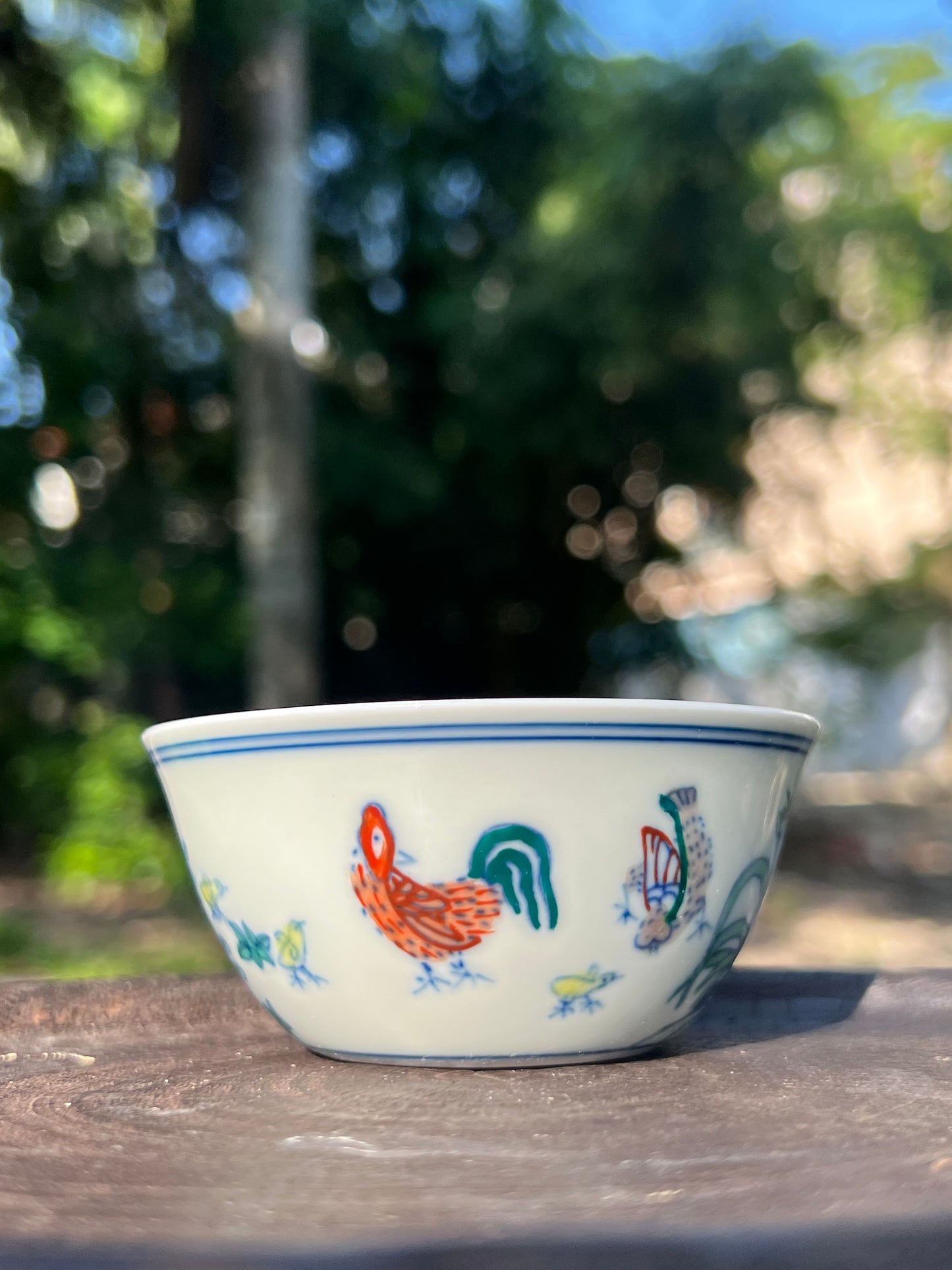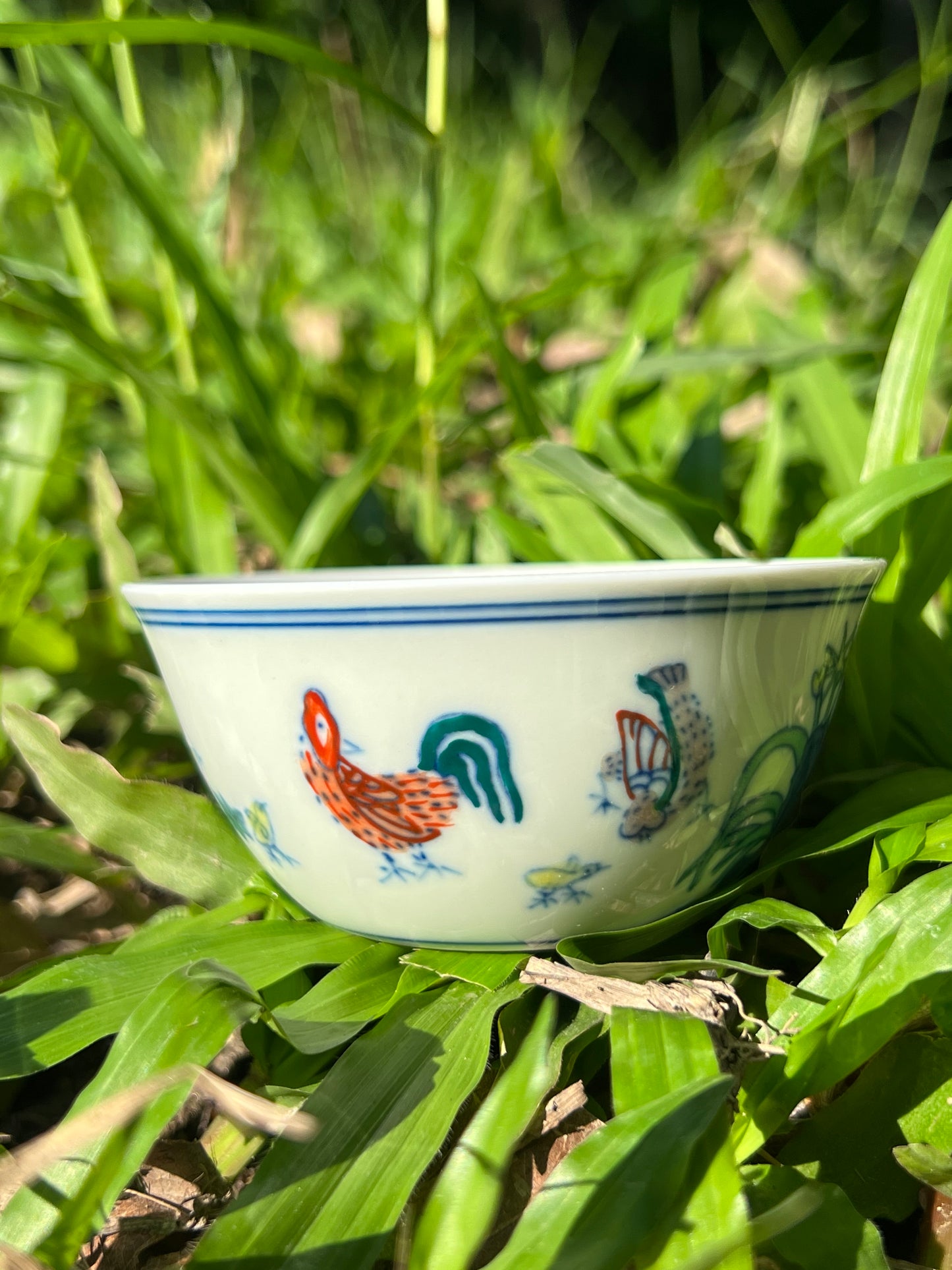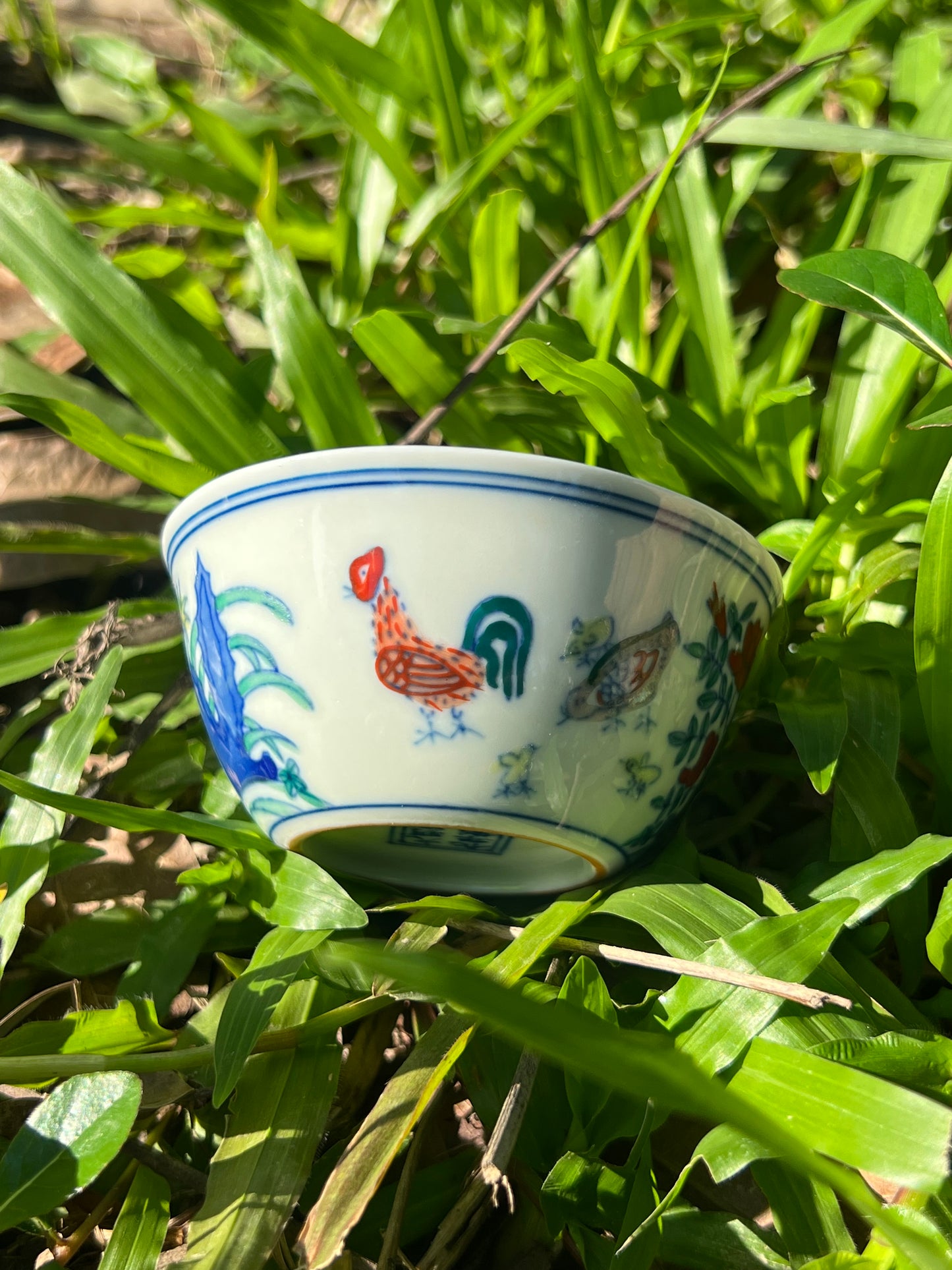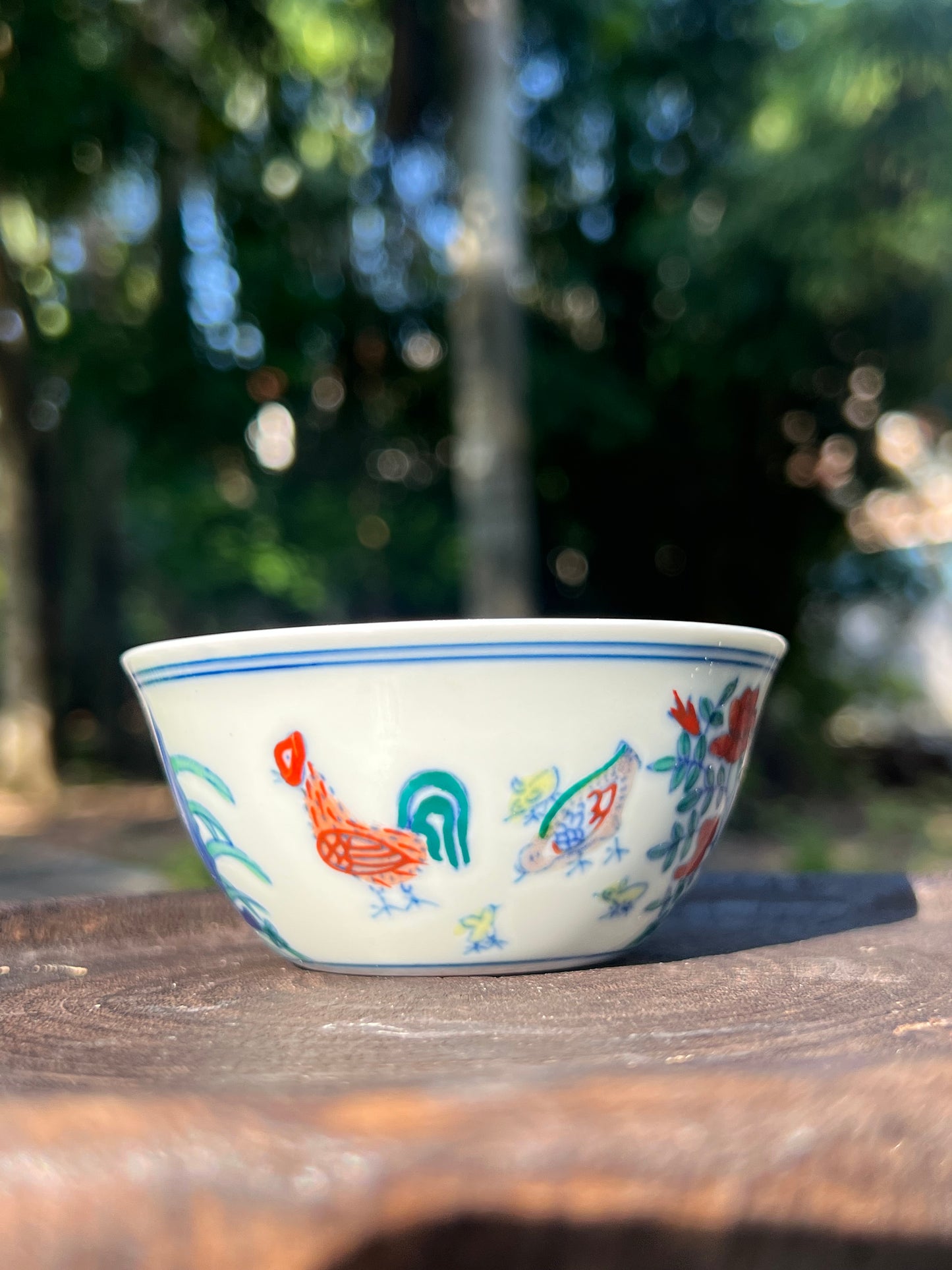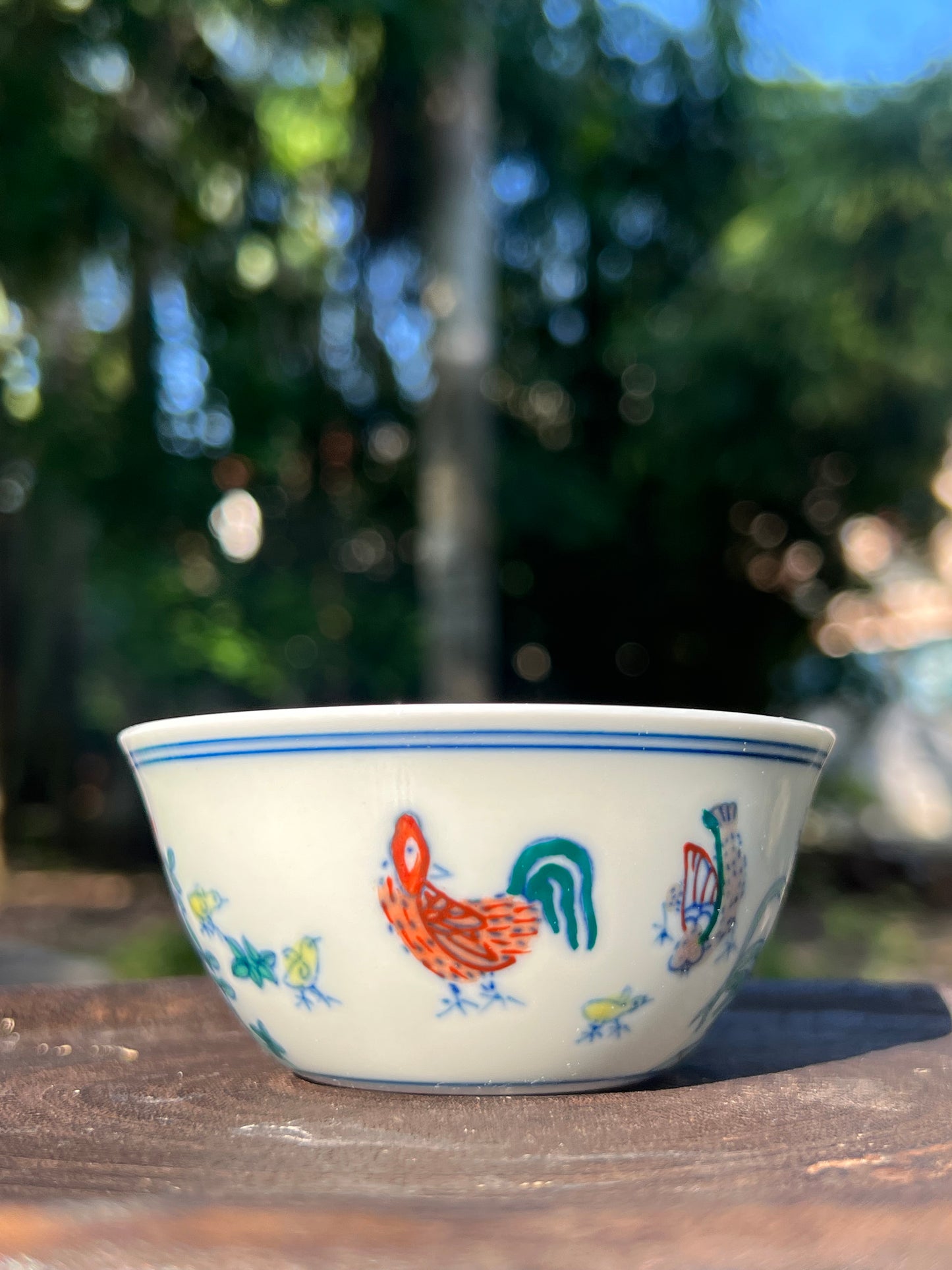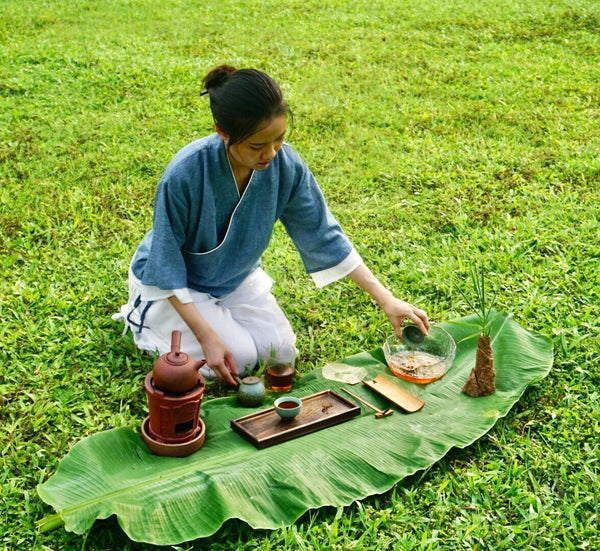Jiangnan Art Tea
Hand Painted Chinese Doucai Porcelain Ji Gang Bei Teacup Rooster Cup Jingdezhen Master Ceramic Artwork
Hand Painted Chinese Doucai Porcelain Ji Gang Bei Teacup Rooster Cup Jingdezhen Master Ceramic Artwork
Couldn't load pickup availability
This Jingdezhen artwork teacup is painted with a Chinese rooster by a Chinese Jingdezhen experienced ceramic painter.
The rooster is an important symbol in Chinese culture, representing loyalty, punctuality, good luck and the beginning of a new day because it wakes people up on time.
capacity: 100ml
place of origin: Jingdezhen, China
P.S Please provide your phone number when placing an order. This is very important when shipping the package. I appreciate any help you can provide.
The Doucai ji gang bei from the Chenghua Period of the Ming Dynasty is one of the fine products fired in the Jingdezhen kiln during the Chenghua period of the Ming Dynasty. It is based on the shape of a chicken jar, and colorful painted patterns are painted on the glaze, including flowers and birds, landscapes, figures, etc. Each piece is a unique work of art.


Doucai porcelain is a treasure among Chinese porcelains, and the Doucai Jigangbei from the Chenghua Period of the Ming Dynasty is the most precious among Doucai porcelains. The value of the Doucai Ji Gang Bei from the Chenghua Period of the Ming Dynasty lies not only in its artistic value, but also in its scarcity. Due to the cumbersome production process and the limited scale of firing in the Jingdezhen kiln during the Chenghua period, well-preserved Doucai Chicken Cups are extremely rare.
Doucai porcelain was first fired during the Xuande period of the Ming Dynasty (1426-1435), and the Doucai porcelain from the Chenghua period of the Ming Dynasty (1465-1487) is the most respected, which is a decorative variety combining underglaze color and overglaze color.
On the outer wall, the outline of the pattern is first drawn with fine blue and white lines, then glazed and fired in the kiln at a high temperature of about 1300℃ (2372℉) to form the body. After leaving the kiln, low-temperature mineral pigments are filled in the blank areas of the body, and then it is fired in the kiln again at low temperature.
The first firing with blue and white is called "underglaze blue and white". The second firing after filling the pattern with colored mineral pigments is called "overglaze color".
After two firings, a kind of porcelain combining "underglaze blue and white and overglaze colorful" is formed. It is called "Doucai" because the blue and white and the glaze colors compete for their beauty.
